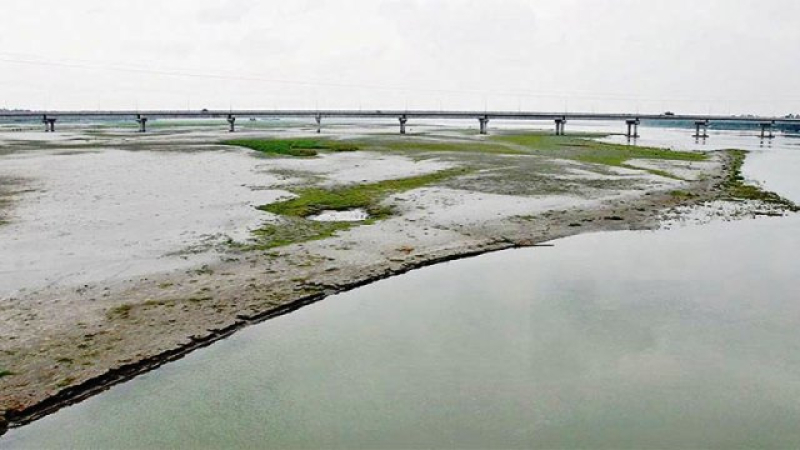- 2025: Resilient Economies, Smart Development, and More Jobs |
- Dhaka rejects India's statement on incident at BD HC residence, New Delhi |
- Stocks end lower; trading falls at DSE, improves at CSE |
- No need to be kind to election disruptors: EC to law enforcers |
- No Media Faced Arson Attacks in 53 Years: Mahfuz Anam |
Execute Teesta Plan, save people from manmade disasters: IFC

Teesta River in Bangladesh goes dry every lean season for diversion of its water in India.
Dhaka, April 1: The International Farakka Committee (IFC) welcomes the government of Bangladesh for sending a note verbale to New Delhi seeking to know about their plan to construct two new canals to divert water of the Teesta River. Simultaneously the government should implement the Teesta Master Plan because efforts for a treaty on the river have remained fruitless and its entire dry season water is being diverted for the least two decades.
Dhaka should not put on hold its efforts for shared management of the Transboundary River because the greater part of its basin lies in Bangladesh. Yet it cannot leave over two crore people living on its two sides helpless and suffer from severe drought in the dry season and devastating floods and river-bank erosion in the summer, IFC said in the statement.
The Teesta is practically a dead river in Bangladesh because of excessive siltation as it has been deprived of its natural flow for decades and the surrounding environment has been damaged adding to sufferings the people. Drought in the Teesta Basin takes a devastating turn in the dry season when people can cross the river on foot. In the wet season the entire flow of the river is released through the sluice gates of the Gajal Doba Barrage in India when it cannot carry this excess load of water due to lack of depth. As a result this causes devastating floods and bank erosions every year. Four waves of flood last year pauperised the people living on its two banks.
Despite continuous assurances the Bangladesh part of the river continues to be deprived of water in the dry season. Now fresh moves have surfaced for two more canals to divert its water. As time passes the share of the river’s flow looks more and more remote. Against this backdrop the Power China Company of the People’s Republic of China at the instance of Bangladesh Water Development Board has prepared a Taka 100 billion comprehensive project not only to mitigate the annual flood and erosion damages but also to ensure the overall socio-economic development of the people of the Northwestern region.
The project stands for sustainable development along the 102 kilometre length of the river from the Teesta Barrage at Dalia of Nilphamari district to its outfall in the Brahmaputra via Mohipur and Kaunia. According to Bangladesh Water Development Board sources the project is likely to be implemented under a loan agreement. But a final go ahead is yet to be given
IFC leaders said it’s not wise continue to remain idle waiting for release of water as the process of desertification is getting from bad to worse in the northwestern region of Bangladesh. The Teesta project is no substitute for the natural flow of the river to keep it alive. Yet the move to mitigate the annual flood and river-bank erosion and improvement of the quality of life of the people of the region through integrated development activities cannot be left to uncertainties. When the compulsion of restoring the natural flow of the river will arise at upstream due to the law of nature, the Bangladesh part of the Teesta will have a new lease of life.
IFC leaders said, the overall development of the Northwestern region of Bangladesh can be accelerated if the Teesta project is expanded to include the old and original Teesta Basin covering The Atrai, The Korotoa and The Punarbhaba rivers. If this is done the command area of the project will cover 28 thousand square kilometres as against the present four thousand square kilometres. The huge Chalan Beel can be used to retain water and facilitate fish and duck farming in the wet season and irrigation in the dry season. The groundwater level in the region will go up and help keep all tubewells operational throughout the year.
The statement has been signed by IFC New York chairman Atiqur Rahman Salu, secretary general Sayed Tipu Sultan, IFC Bangladesh president Prof. Jasim Uddin Ahmad, senior vice-president Dr. S.I. Khan, general secretary Irfanul Bari and IFC coordinator Mostafa Kamal Majumder.

